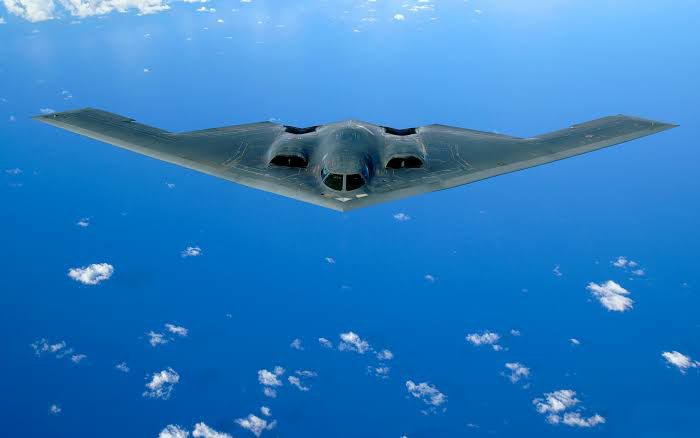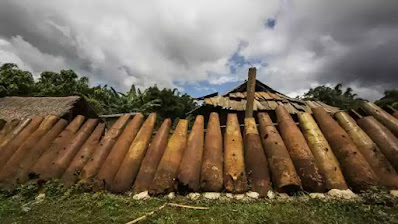In 1953, the US president Eisenhower gave a speech at the UN General Assembly entitled "Atom for Peace' (AFP). The US was determined to use atomic technology for peaceful purposes within and among developing counties for civilian nuclear programmes. The recipient states were to use the nuclear technology only for civilian and peaceful purposes. The Iranian nuclear programme (INP) began in 195 when Mohammad Reza Shah of Iran entered into an agreement to cooperate on civilian use of atomi energy.
In 1959, in the University of Tehran, the Iranian Shah established the Tehran Nuclear Research Centre and initiated negotiations with the US under AFP for civilian nuclear support. In 1967, the US established a 5 MW nuclear reactor with highly enriched uranium fuel to fuel the reactor at the Tehran Nuclear Research Centre (NRC), which had the capacity to produce 600 g of plutonium per year in spent fuel. Akbar Etemad was the father of the INP. Under the AFP, Iranian scientists also got an opportunity to get trained in the US. In 1974, Iran created the Atomic Energy Organisation of Iran to achieve the target of training manpower for 20 reactors in the next 20 years. Subsequently, in 1975, the Atomic Energy Organisation of Iran and MIT entered into an agreement to train Iranian nuclear scientists.
Things changed after the 1979 Iranian Revolution. When the rule of the Shah came to an end in 1979, the US suspended all nuclear cooperation with Iran. Iran, on the other hand, continued to receive support from Russia, China and Abdul Qadeer Khan nuclear arms bazaar. Russians helped Iranians in building a heavy water reactor in Iran that has capabilities to produce weapons grade plutonium. China assisted Iran with two sub-critical reactors and electromagnetic isotope separation technology for the Esfahan Nuclear Technology Centre.
Pakistan provided Iran with P-1 and P-2 centrifuges that were used to enrich the uranium. Pakistan also gave Iran technical drawings and advanced design for reactors. Initially, Ayatollah Khomeini reduced the intensity of the INP, but the 1980 Iran-Iraq war brought about a rethinking in Iran about its nuclear programme. In 1983, Iran asked the IAEA to provide Iran assistance for technical help in setting up of a plant to provide uranium hexafluoride (UF6) required for enrichment. With assistance for France, Iran had established a home-grown facility to develop nuclear fuel at Esfahan Nuclear Technology Centre (ENTEC). The IAEA, under Article X1-A of its statute, was obligated to help a member state with such a project. In the same year, a team from the IAEA visited ENTEC to assist Iran
local expertise. Finally, due to the US pressure, however, the IAEA did not initiate any support. As time progressed, the US applied more pressure on the IAEA and other states to refrain from iting Iran. In 1995, then Iranian President Rafsanjani decided to break the ice and began to improve He gave a firm named Conoco a contract on 6 May 1995 to develop an Iranian offshore oil field in he Persian Gulf but the Clinton administration prevented the firm from going ahead. Clinton continued sanctions against Iran while Rafsanjani signed an agreement with Russia to begin work on completing the incomplete Bushehr plant. From 1976 to 2003, as per the subsidiary arrangements of the safeguards agreement between Iran and the IAEA, Iran had to report any new facility to the IAEA within 180 days along with providing information on any new location or outside facility. Since 1992, the subsidiary arrangement that were part of the safeguard agreement began to change but Iran was not a party to change in the safeguard agreements till 2003. The Iranian opposition party, Mujahideen Khalq Organisation (MKO), revealed that Iran had established a secret facility at Natanz. As Iran was not a party to the changing safeguard agreements till 2003, by not declaring the Natanz facility within 180 days, it did not violate any legal obligation of the IAEA.
Since 1992, the Board of Governors at the IAEA began to accept the subsidiary arrangement called modified Code 3.1, which required a member state to notify any decision to setup a new facility immediately. In 2003, Iran agreed to abide by the modified Code 3.1, but as the US sanctions continued, Iran refused to finally ratify the code. Iran began negotiations with the EU-3, that is, Britain, France and Germany. The talks led to the adoption of Sadabad Declaration between Iran, Britain, France and Germany, whereby Iran decided to suspend all uranium enrichment. This was followed in 2004 with the Paris Agreement. Under this, it was agreed that Iran and EU-3 will look for a long-term agreement to ensure an INP for peaceful purposes. The Sadabad Declaration and the Paris Agreement failed as Iran ud not get a security guarantee for any attack on Iran. Iran said that it got a box of chocolates out of deals, which was empty. Since 2006, Iran resumed enriched at its facility in Natanz. The belligerent policy of the US on Iran gave rise to a hardliner in Iran, Mahmoud Ahmadinejad, who became the next president. The refusal of Iran to ratify the modified Code 3.1 led the US to send the Iranian dossier for sanctions to the UN Security Council. In 2009, Iran sent a letter to the IAEA declaring that it is constructing a second uranium enrichment facility at Fordo under the mountain. As the Iranian Majles had not ratified the modified Code 3.1, it was not bound to follow. Tensions between the US and Iran continued. In 2006, China, Russia and the US joined the group of EU-3, becoming the P5 + 1. Germany was a key trading partner of Iran and its nuclear programme depended upon German products and services. German firms like Siemens, MercedRLngi, Krapp and Volkswagen were also heavily operational with Iran. The negotiations of P5 +1 did not yield any results due to the presence of the hardliner Ahmadinejad.
In 2012. ute election of Hassan Rouhani, things began to progress further. The first success was achieved n the as per the Geneva Accord, where a Joint Plan of Action was achieved. It was further negotiated 13, leading to a final Join Plan of Action (JCPOA) in June 2015. The 2013 Geneva deal acknowledge Iran has to accept that it would not enriched uranium for a nuclear bomb. The deal accepted the ft it is a step-by-step solution where actions by Iran in good faith shall gradually lead to a comprehensive solution, and would finally involve an integrated whole, where nothing would be agreed upon everything would be agreed upon. Under the Geneva Agreement, Iran was not to enrich uranium beyond 5 per cent. Iran would make no advances of activities at facilities in Natanz, Arak and Fordo.
In 2015, under the Lausanne framework Joint Comprehensive Plan of Action, Iran has agreed not enrich uranium beyond 3-6 per cent. It retains the right for a peaceful nuclear programme. Iran woda cut centrifuges from 19,000 to 6,104, with 5,060 centrifuges for enrichment. This makes it tough for i to make a bomb. Iran would also reduce its stockpile from 10,000 kg to 300 kg, ensuring transparent in its peaceful use of nuclear technology. The IAEA will access all nuclear facilities of Iran and there be gradual lifting of sanctions. Iran has to address the concerns of the IAEA related to possible milit dimensions of its nuclear programme and has to redesign the heavy water facility at Arak and transfo the Fordo facility into a physics research centre.
The Middle Eastern states had a mixed response to this arrangement. Hezbollah leader Hassan Nasrallah and the Lebanon's speaker Nabih Berri welcomed the deal, along with the Syrians. Saudi Arabia felt that the Iran deal allowed Iran to maintain a nuclear threshold and that the elimination of sanctions will economically revive Iran. A strong Iran will allow it to assert its hegemony over Lebanon, Iraq, Yemen and Syria. Though Israel has criticised the deal, we need to remember that Israel has actually never witnessed any existent threat from Iran. It has, however, faced regional competition post-withdrawal of sanctions For Israel, the real issue, therefore, is not the bomb but the regional balance of power.
A nuclear Iran, even for civilian we threatens the decade-old strategy of allowing Israel to be an unrivalled military power of the Middle East Israel knows that allowing Iran to have a civilian nuclear facility means that Iran too shall have the flexibility to turn military in nature at a short notice. Such a situation would severely delimit the ability of Israel te be the only player in the Middle East to establish regional hegemony with 200-plus unmonitored nuclear warheads. For Saudi, the revival of the regional GCC to prepare for a long-term confrontation with Tehran is the only option.
A renewed attempt to strengthen the Saudi-Pakistan axis is already underway. Iran has decided to follow the Chinese model. The idea is to get the sanctions removed and get rich and then use the wealth to establish Iran as a regional hegemony. Israel and Saudi Arabia both fear the dominance of Iran stretching from Beirut, Damascus to Baghdad and Aden. This fear is disturbing the balance of power in the Middle East post the 2015 Nuclear Deal.




































